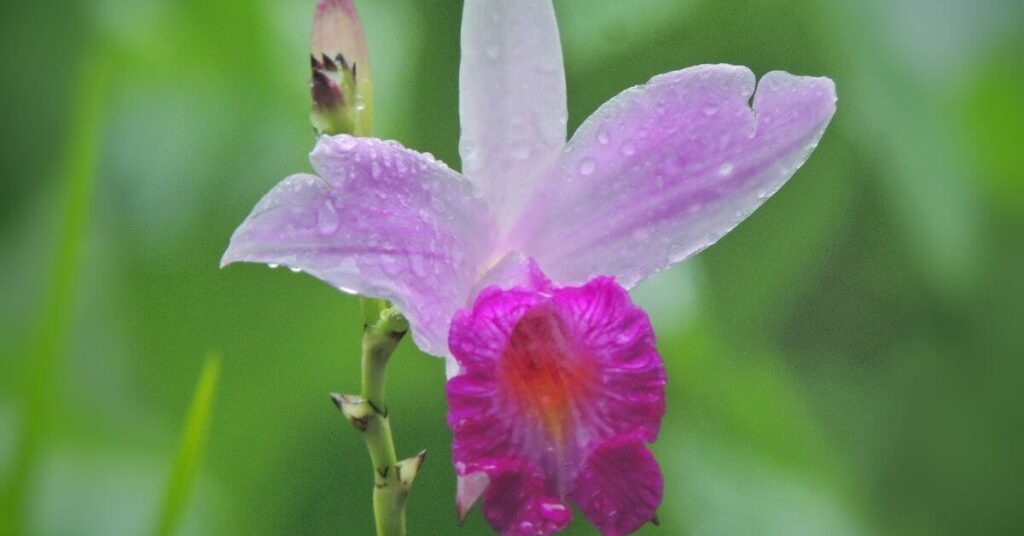Introduction:
Quaresmeira (Tibouchina granulosa) is an ornamental plant that captivates gardeners and nature enthusiasts with its beautiful flowers and lush foliage. Native to Brazil, this species belonging to the Melastomataceae family stands out not only for its beauty but also for its ease of cultivation and adaptability to different environments. In this article, we will explore various aspects of Quaresmeira, from its botanical characteristics to practical cultivation tips, allowing you to fully enjoy this magnificent plant in your garden.
1. Origin and Botanical Classification:
Quaresmeira is a native plant of the Brazilian Atlantic Forest, found in regions ranging from Espírito Santo to Rio Grande do Sul. Its scientific name, Tibouchina granulosa, reflects its botanical classification, being part of the Tibouchina genus, which encompasses several ornamental species.
2. Morphological Characteristics:
- Attractive Foliage: Quaresmeira leaves are oval-shaped, with an intense green color and a velvety texture, adding a special touch to the garden.
- Dazzling Flowers: The main highlight of Quaresmeira is its flowers, which appear in inflorescences ranging from pink to purple. Flowering usually occurs in spring and summer, providing a colorful spectacle in the garden.
3. Varieties and Cultivars:
There are several varieties and cultivars of Quaresmeira, each with its specific characteristics. Examples include Tibouchina granulosa ‘Purple Glory,’ known for its intensely purple flowers, and Tibouchina granulosa ‘Jules,’ which has a more compact size, ideal for smaller spaces.
4. Ideal Growing Conditions:
- Climate: Quaresmeira adapts well to tropical and subtropical climates, being resistant to moderate frosts. Ensuring that the plant receives direct sunlight promotes lush flowering.
- Soil: It prefers well-drained soils rich in organic matter. Adding organic compost to the soil before planting contributes to healthy development.
- Irrigation: During drier periods, it is essential to keep the soil slightly moist. Avoid overwatering, as Quaresmeira is sensitive to excess water.
5. Propagation and Planting:
Quaresmeira can be propagated by seeds or cuttings. Seeds should be sown in a lightweight substrate, while cuttings are effective for faithfully reproducing the characteristics of the mother plant. Planting can be done directly in the soil or in pots, depending on available space.
6. Care and Maintenance:
- Pruning: Regular pruning stimulates healthy growth and maintains the plant’s shape. Remove faded flowers to extend the flowering period.
- Fertilization: Fertilize Quaresmeira in spring and summer with balanced fertilizer. Avoid excess, as the plant is sensitive to excessive fertilization.
- Protection Against Pests and Diseases: Quaresmeira is generally resistant to pests, but monitoring the presence of aphids and scale insects is recommended. The use of natural pesticides is an eco-friendly option.
7. Landscape Use:
The versatility of Quaresmeira makes it an excellent choice for various landscaping purposes. It can be used in mass plantings, as a border in flower beds, in decorative pots, and even in urban tree planting projects.
8. Curiosities and Popular Myths:
- In popular culture, Quaresmeira is associated with legends and myths, considered by some as a plant that attracts positive energy and repels negative energies.
- Its name is related to its flowering, which often coincides with the Lenten season, the Christian liturgical period leading up to Easter.
Conclusion:
Quaresmeira, with its exuberance and ease of cultivation, is a charming choice for those looking to add beauty to their garden. By understanding its botanical characteristics, ideal growing conditions, and necessary care, you will be ready to fully enjoy the charms of this ornamental plant. Whether in urban landscaping or residential gardens, Quaresmeira undoubtedly stands out as a vibrant and personality-filled option. Invest in this botanical gem and transform your space into a true oasis of natural beauty.






